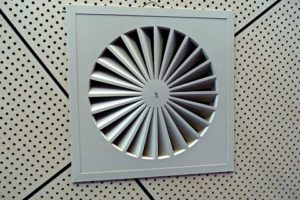
Sometimes during interior renovations, mold is discovered but not properly cleaned up and can result in cross-contamination throughout the home.
Has the discovery of mold in your Central Florida property got your worried? Markham Services is here to help. We have a team of experts that will help you confirm if mold is present!
The presence of mold in homes, schools, and businesses is of mounting concern in Florida. Mold grows on virtually any organic material, be it in food, carpet, wood or paper.
To grow, mold only needs three main ingredients: food, moisture, and optimum temperature. So anytime there is a water intrusion, be it a minor plumbing leak or a major flood that wasn’t dried, there is a high chance of mold growth.
Mold can cause serious health problems that range from:
In addition, mold can cause significant aesthetic and structural damage to building materials and other personal property. Indoor mold growth can also negatively impact indoor air quality and pose certain health risks to occupants.
Oftentimes, mold grows in areas where there is minimal lighting and a lot of moisture. In most cases, these areas aren’t easily visible and not regularly cleaned. This allows the mold to grow undiscovered and unchecked.
By the time you start noticing a moldy, musty smell, rest assured the mold has grown to dangerous extents. And, every day that it’s left unattended, the problem will only continue to get worse. Thus, if you have reasons to believe mold is growing in your property, act fast.
Mold testing and inspection are the keys to comprehensive mold abatement. In most cases, testing and inspection work side by side with each other. There are instances, however, when certain questions can be answered with one or the other.
A Markham Services mold inspection is a non-destructive visual inspection for mold and conditions that cause mold in buildings.
The purpose of a mold inspection is to identify and document visible evidence of mold growth, moisture issues, and other suspect conditions that are indicators of indoor mold growth.
Thanks to state-of-the-art technology such as a borescope imaging camera and electronic moisture detection equipment, no major physical damage is ever done to any structure.

After the visual inspection is completed, the first task is usually to gauge the levels of moisture present in the walls. The moisture levels are measured at 2-feet intervals and special attention is given to the areas where water sources are present, such as around water heaters or under sinks.
A special two pin meter is used to measure the moisture levels. Any level below 15% is considered acceptable. Experienced inspectors combine knowledge of ventilation systems, building science, and moisture intrusion points to identify the source of moisture issue responsible for mold growth.
Aside from inspecting the mold, we will also likely have some questions for you. The questions usually revolve around the health of occupants, building history, and potential moisture events that could be causing mold.
Normally, a mold inspection only takes a couple of hours, depending on the scope of work and other factors.
After the mold inspection, we will then give you an accurate mold report. The report will contain information about the mold in your home, including the number of mold spores per cubic meter or air and the types of mold found.
If you’ve found or suspect you have mold in your house, contact us today! Our dedicated team will provide a detailed inspection and advice you on the way forward.

Sometimes during interior renovations, mold is discovered but not properly cleaned up and can result in cross-contamination throughout the home.
If so, it could mean that the indoor air quality is poor and potentially caused by mold.
Poor construction can also cause mold to grow.
Dryers should be vented outside. If not, a myriad of moisture problems can develop.
Fans vented into attics is a common construction flaw that leads to mold problems in properties.
Leaky roofs are the number one cause of moisture problems in homes. If the home is old and the roof hasn’t been inspected, this could be a potential source of moisture fueling the mold growth.

Poor window installation could allow moisture through. If this happens, mold will grow.
If the windows leak or sweat this could indicate that there are moisture issues in the home causing mold.
If so, that is a strong clue of the potential cause of mold concerns.
Again, this could provide further clues as to the origin of the mold problem.
Here's what Beth Johnson, a satisfied Markham customer, had to say about working with us:
I could not be more pleased with the promptness and professionalism of Markham Services. It is not an easy time when you have issues in your home particularly when they could be making you sick. They put my mind at ease as I knew that I was being given accurate information by people that knew what they were talking about! Thank you Liz and Marvin!



Mold issues can progress very quickly and are a hazard to your health. Don't wait to schedule your appointment.
Schedule an Appointment